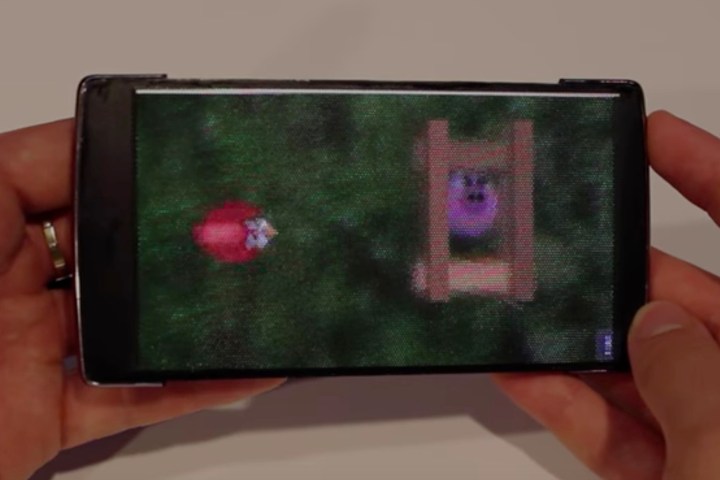
Researchers from Queen’s University’s Human Media Lab have built a smartphone called the HoloFlex, which, as the name suggests, is made with both a flexible body and a holographic display. The result? Images that, quite literally, pop out at you.
Instead of creating two images — one for each eye, like traditional 3D displays — HoloFlex uses a series of lenses that disperse the light from the screen in multiple directions. And what we mean by “a series of lenses” is 16,000 of them, each rendering a slightly different view of the object on the screen. That means that the image appears to be 3D to those nearby, eliminating the need for super-stylish 3D glasses or any kind of head-tracking system.
The phone also uses display flexibility in a manner that hasn’t really been done before — as a way to input commands. In one example, the team shows how the flexible display could be used to launch an angry bird of Angry Birds — easily one of the most useful applications for the technology. It could even be used to send Star Wars-esque messages.
“By employing a depth camera, users can also perform holographic video conferences with one another,” said Dr. Roel Vertegaal, a professor at Queen’s University’s School of Computing, in a statement. “When bending the display users literally pop out of the screen and can even look around each other, with their faces rendered correctly from any angle to any onlooker.”
Of course, the technology isn’t perfect. While the display itself technically boasts a 1080p resolution, after being fed through the HoloFlex lenses the picture ends up with a resolution of 160 x 104. Not the best for a modern device. What that means is that we shouldn’t expect to see the technology on the Samsung Galaxy S8. And we definitely shouldn’t expect it on the iPhone 7. Still, as manufacturing processes get better and pixel densities get higher, the resolution in the technology should improve. Perhaps one day you really will be able to launch angry birds at thief pigs in 3D.
Check out the video below to see HoloFlex in action.
Editors' Recommendations
- 3D printed cheesecake? Inside the culinary quest to make a Star Trek food replicator
- New 3D smartphone technology could change photography, experts say
- AMD teases performance of its revolutionary 3D V-cache chip
- AMD’s 3D-stacked Ryzen 7 5800X3D is ‘world’s fastest gaming processor’
- Need a last-minute Halloween costume? Check out these 3D-printable getups


